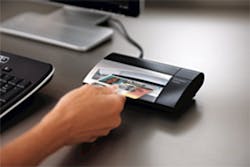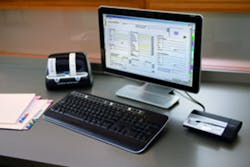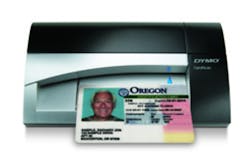Since improper patient identification was first identified as a leading cause of medical errors by the Joint Commission on the Accreditation of Healthcare Organizations (JCAHO), improving patient identification accuracy has remained the top priority among the JCAHO’s annual National Patient Safety Goals. In addition to compromising patient safety, improper patient identification processes increase the risk of medical identity theft, such as insurance fraud, in which patients share insurance cards or providers submit false claims. Today, a PPID system is no longer just nice to have – it’s mission critical to practices of all sizes.
Two very important and sensitive patient documents that are used frequently at the point of patient registration – a patient ID card, such as a driver’s license, and an insurance card – cannot be simply turned over to the provider indefinitely to complete back-office digital conversion. Some practices are turning to self-registration systems, such as patient information kiosks and registration tablets to address this problem. These systems can streamline data entry, but they do not adequately address the need to convert hardcopy card information into a digital format that can be added to the patient’s electronic record. They are also out of reach for many small- and medium-size practices due to cost and technical support requirements.
The solution
A technology solution that is helping streamline the digitizing of patient identification data is a dedicated, high-resolution card scanner. These scanners streamline patient registration by capturing images of patient ID and insurance cards, which can then be instantly uploaded to a patient’s electronic record when integrated with an EHR system.
The implementation
EHR and practice-management software providers are also finding dedicated ID-card scanners a welcome addition to their solutions. As an example, the cloud-based EMR service from Watertown, Mass.-based athenahealth recognizes high-resolution ID-card scanners and integrates their information into its network. At the patient admissions desk, the scanner connects to the athenahealth network via the office desktop or laptop. When a patient presents identification and insurance cards, that information is scanned and the data is added to the patient’s electronic record file, which is stored securely in athenahealth’s cloud-based system.
Dedicated ID-card scanners are particularly beneficial to small- and mid-size medical practices, especially those with multiple office locations that may have one person supporting technology across the entire office network. One such example is Atlanta-based IntraHealth Group, management services provider to athenahealth client Southern Orthopaedic Specialists (SOS). IntraHealth Group found that an ID-card scanner could streamline securing patient identification and proof-of-insurance information during registration, effectively reducing a three-step process to a single step.
According to IntraHealth Group’s IT Director Howard Hirth, prior to using ID card scanners, the admissions staff would have to leave the desk to copy or scan a patient’s ID and insurance cards, create a PDF version of the documents and then manually upload those into the patient’s electronic record. Today, they use an ID-card scanner to perform a front-and-back scan for each patient ID card, and the software automatically adds the images to the patient’s file. “It’s basically a scan-and-click operation,” says Hirth.
The results
Hirth says that reducing the time it takes to process patient identification information during admissions is helping SOS reduce overall patient wait times and frees up admissions staff to answer questions and be more focused on patient needs. He is quick to point out that with any new technology implementation, ease of installation and low maintenance are just as important as features and functionality, because a solution that malfunctions, or requires a lot of end-user handholding, takes time away from more mission-critical work.
“The first desktop scanner we used did the job, but required a lot of calibration and ongoing support,” says Hirth. “I was looking for a true plug-and-play solution and found out about the CardScan Image Capture scanner from DYMO, which after a few minor software tweaks, worked perfectly.” Hirth says that in addition to being easy to install with minimal support, the CardScan Image Capture is also three times less expensive than his existing scanning solution.
IntraHealth Group is expanding in the region, and Hirth plans to use CardScan Image Capture scanners in all new locations. “Now, when we need to install a scanner, an IT person doesn’t have to do it. I can send them to the practice managers and have them install the software, plug in the scanner and it’s ready to go.” When asked about how practice managers and admissions staff feel about the new scanners, Hirth says: “I rarely get calls on the scanners, and in my business, if they don’t call, I know it’s working.
The takeaway
Patient safety and practice information security are ever-present concerns for medical practices. Technology is helping; in particular high-resolution ID-card scanners are reducing errors, streamlining admissions and speeding reimbursement. ID-card scanners also eliminate the need to make unsecured photocopies of patient ID and insurance cards, further protecting the privacy and security of patient records while also helping practices reduce medical identity theft and insurance fraud. Practice managers and EHR software providers should give careful consideration to integrating new modular ID-scanning solutions, either as a complement to existing EHR systems or as a low-cost, standalone solution for smaller practices.
For more on DYMO, click here.
For more on athenahealth, click here.







